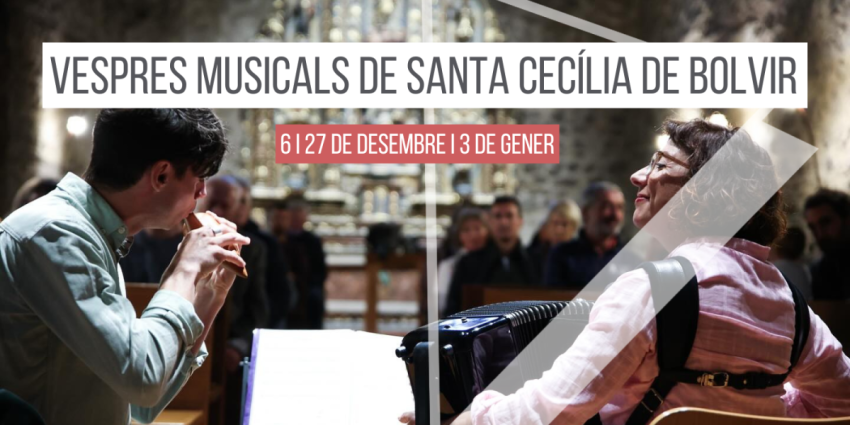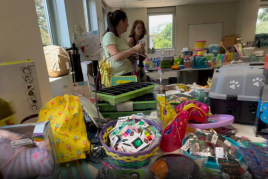Route The emotional landscape of Joan Miró in Mont-roig del Camp

 "The emotional landscape of Joan Miró" is a tour of the places in Mont-roig del Camp that Joan Miró painted in his paintings, identified locations, which can be visited by following the directions on the Miró itinerary.
"The emotional landscape of Joan Miró" is a tour of the places in Mont-roig del Camp that Joan Miró painted in his paintings, identified locations, which can be visited by following the directions on the Miró itinerary.
On this route you pass through several important points for the artist, such as Mas Miró where Joan Miró used to spend the summer or the Virgen de la Roca Hermitage.
Throughout the tour, the spaces will be complemented with quotations from the artist and correspond to the environment.
As we said, "The Emotional Landscape of Joan Miró" is a journey through six locations of the Miró places of Montroig . The spaces are identified by a panel (a red mountain) and we will divide them into two parts: the one closest to the beach and located to the south of the motorway and the one from the town of Mont-roig.
1. The Farmhouse
We arrived at "Mas Miró". From the driveway we first see the painter's workshop. After the workshop we find the "Mas" and then, frontally, the house of the caretakers. The latter will be the subject of "La Masía" (1921-1922), the famous painting that Hemingway bought. We know that Miró began the painting in Mont-roig and that he finished it in Paris, painting it barefoot, stepping on the earth and grass of the Mas. It is an inventory of the life of the farmers of Montroig, with their utensils and animals. A girl with blonde hair and a look immortalized in "La Vailet" (1918) ran through these fields. It is the red-haired Consuelo Boquera when she was four years old; his parents were the mediators of those lands. The fields behind the Mas are those that were reflected in the painting "Vines and olive trees" (1919).

And it is the painting of "La Masía" that makes Miró say that:
"Nine months of constant and heavy work! It was the summary of my entire life in the field. From a large tree to a small snail, I wanted to put everything I wanted in the field..." (to Francisco Trabal, 1928).
2. Beach
Joan Miró liked to go down to the Pixerota beach to swim and exercise. It was the beach where he drew his well-known Miró stars and which would later become one of the most representative symbols of his work. The Pixerota beach inspired him to create one of his first pictorial works "Playa de Mont-roig" (1916).


"In autumn, on the Mont-roig beach, where no one goes, the footprints of men and sheep are like the constellations..." (to Sebastià Gasch, 1963).
3. Montroig, San Ramon
After the hermitage of Peiró we will arrive at the red mountain, where the hermitage of the Virgen de la Roca is; above the white complex stands out, almost hanging in the void, the chapel of San Ramón. The painting "Montroig, San Ramón" (1916) is the view from the last section of the old road that comes from the town. This mountain of great devotion to that dark-haired Virgin found in one of those caves, is where ancient stories of a "Moorish king" converge, and the very plausible theory that the shapes of these caves (of sandstone) will serve as inspiration for Gaudí.
The natural forms of the Ermita de la Roca Natural Space motivated a young Miró to let his Cézannian influence be enjoyed. Miró said that the secret of his work was balance. The position of the hermitage of San Ramón, the cubic forms of the red rock and the whole complex, defying the laws of balance, captured the attention of the genius.


And Miró said of "Mont-roig, San Ramon" that:
"The hermitage of the Virgen de la Roca has always had a great impact on me. That vinegary red color that gave the town its name..." (Miró in the film "De un rouge ignité: Miró y Mont-roig "by Martí Rome, 19179).
The fields of Montroig are also the scene of that "Tierra tilled" (1923-1924), a breaking point in Miró's painting, where the previous poetic detailism, closer to reality, gave way to an irruption of the imaginary, exploding in a singular world of signs. Signs always rooted in the places of Mont-roig. It's the "Dancer Stick".
4. Montroig, the town
The painting "Mont-roig, el pueblo" is one of the visions of the town that Miró paints. The painting is the view that can be seen from Las Cruces and highlights the majesty of the New Church and crowded houses that reveal longitudinal streets that look out to sea. The work is part of the first pictorial part of the genius.


And "Mont-roig, the town" leads him to affirm that:
"Montroig weighed heavily on me. Mallorca is poetry, it is light. Until I managed to establish the balance between Montroig and Mallorca, I have not entered maturity..." (to Sebastià Gasch, 1963).
5. Town and Church of Montroig
Already in the town we find "Mont-roig Town and Church" (1919) and "Mont-roig, the town" (1916). The first is the view from the "First Bridge", next to the Agricultural Cooperative.
There are some significant elements: the peasant digging, the Catalan flag (added by Miró) on the roof of a house on Calle Mayor (in the foreground), the simplification of some reeds that intersect to form almost Miró stars, and a "173" measuring out. He looked at that book / interview with Georges Raillard, he will say: "if I do a series of things, they are always in an odd quantity...", and when the author asks him about the excess of "173", he will reply: "it was not about a plastic interest, it was for the figures themselves". The other perspective of the town is from the side, from the "Las Cruces" hill. You can sense those streets that cross it longitudinally towards the sea, and the coasts that join them in stages and a little abruptly.


But it is the "Village and church of Mont-roig" that make him say that:
"When I travel I always carry a Mont-roig carob in my briefcase. I have never lost that contact with Mont-roig. It has given me the strength of a tree..." (Miró in the film "In a fiery red: Miró and Mont-roig "by Martí Rom, 19179).
What to do
Muntanyes de la Costa Daurada
The municipalities of the Costa Daurada Mountains make up a territory of…
Jumpland Aventura Ecològica
Cambrils (a 13.4 Km)Venture into the world of Jumpland Aventura, a park for everyone who…
Where to eat
Restaurant Denver Cambrils
Cambrils (a 12.5 Km)From the legendary Xiri to the current restaurant, Denver offers a creative…
L'Orangerie de Clos Barenys
Vila-seca (a 16.4 Km)Under our fires, we prepare haute Mediterranean cuisine by selecting the finest…
Arena Tapas Restaurant
Salou (a 17.9 Km)Enjoy an innovative cuisine, with high-quality local products of proximity, with an…
Where to sleep
Hotel Fonda El Camí
Cambrils (a 11.8 Km)Located in the historic center of Cambrils, 40 rooms with all amenities.…
Casa Rural Mas Montbrió Belvedere
Cambrils (a 11.7 Km)Mas Montbrió Belvedere is the ideal place to enjoy nature and the…
Hotel Sant Jordi
Montbrió del Camp (a 13.6 Km)Located in the town of Montbrió del Campo, Tarragona province, this hotel…
Càmping La Llosa
Cambrils (a 10.8 Km)We address a family audience, that's why we have been awarded the…



















